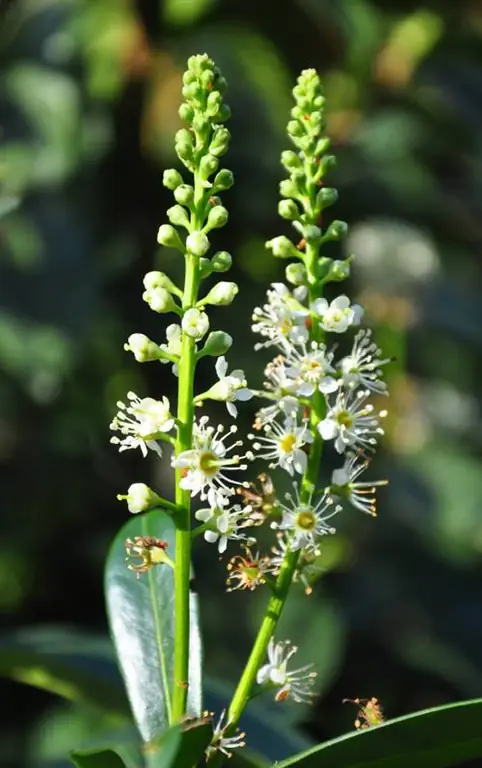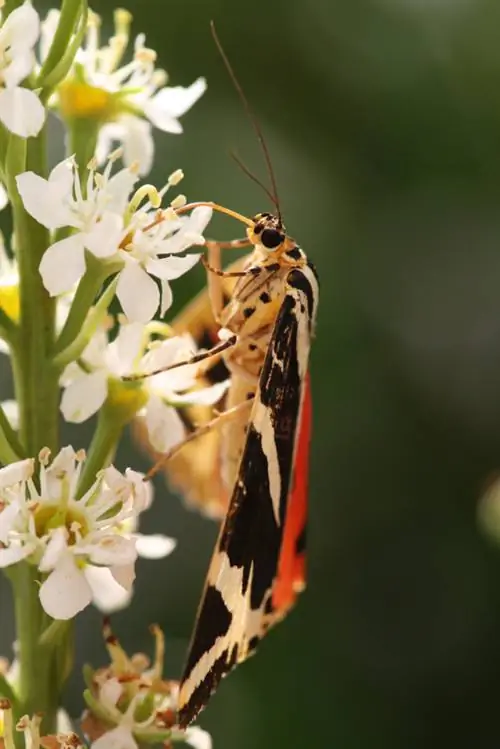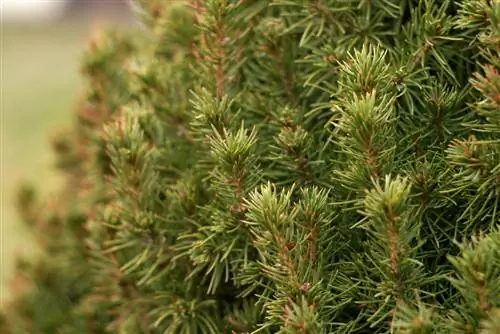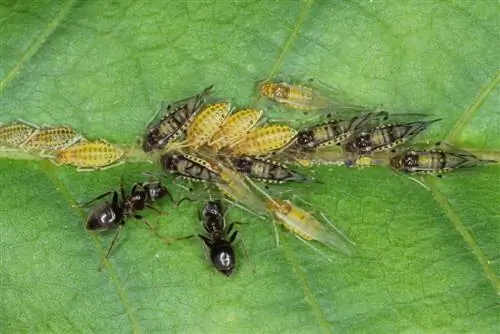- Author admin [email protected].
- Public 2023-12-16 16:46.
- Last modified 2025-01-23 11:20.
Despite the fact that the cherry laurel is one of the robust garden trees, it is also repeatedly attacked by pests. Scars from the various species of aphids, the black weevil is feared by garden owners. The voracious larvae of the beetle can damage the roots of the laurel cherry so severely that the tree even dies.

Which pests are common on cherry laurel?
Typical pests on cherry laurel are the black weevil, which leaves feeding marks on the edges of the leaves, and subterranean larvae, which damage roots. Aphids can appear in large numbers and weaken the plant. Leaf miners cause serpentine lines in the leaves and impair photosynthesis.
The typical feeding marks reveal the beetle
Since the black weevil is nocturnal, you will only see the brown or black beetle with the strong trunk if you examine the cherry laurel closely with a flashlight in the dark. You can definitely recognize an infestation by the small indentations that the beetle eats into the edges of the leaves. At the same time, the larvae living in the soil feed on the roots of the cherry laurel and thereby cause considerable damage to the plant.
Successfully combating black weevils
If you discover bay insects, you should first try to catch the adult beetles. It has proven useful to place clay pots filled with wood shavings under the bushes. The insects use these traps as a resting place during the day, so you can easily collect the pests.
Additionally work commercially available neem press cakes into the soil. Neem oil is poisonous to the beetles and larvae and stops the pests from continuing to eat the laurel cherry.
Biological plant protection by spreading beneficial insects
If there is a severe infestation, fighting with nematodes has proven to be effective. The tiny roundworms penetrate the voracious larvae and kill them within a very short time. Since the nematodes continue to multiply, this method is considered very sustainable. At the same time, it protects the environment because the beneficial insects are harmless to humans and vertebrates.
Aphids: Annoying Pests
Almost from one day to the next, thousands of aphids can colonize the cherry laurel and cause massive damage to the tree. Under favorable conditions, the pest can clone itself up to five times a day, thus ensuring mass distribution. Aphids sit in large colonies on the shoots or under the leaves and cover these parts of the plant with their excretions.
Consequences of the infestation
The sticky honeydew clogs the pores of the leaves, the foliage of the laurel cherry curls up, shoots and flowers die. The lice also transmit plant viruses, which can cause additional damage to the cherry laurel.
What helps against pests?
There are a whole range of effective control methods:
- For light infestations, rinse off lice with a sharp jet of water.
- Spray the cherry laurel with nettle broth, soapy water, neem oil or curd soap. However, this treatment must be repeated several times.
- If these measures do not help, you can use commercially available insecticides. You should prefer products that are gentle on beneficial insects.
Leaf miners in cherry laurel
If you discover light brown serpentine lines in the leaves, this indicates an infestation with leaf miners. The butterfly caterpillars only indirectly affect the laurel cherry, as they impair the plant's photosynthesis through their feeding passages. This leads to chronic malnutrition of the plant.
Unfortunately, there are currently no insecticides approved for combating leaf miners in the home garden. To prevent the pests from spreading any further, all fallen cherry laurel leaves should be picked up and disposed of with household waste.
Tips & Tricks
Wasps on the cherry laurel are annoying, but they do not need to be fought. The animals only feed on the sweet nectar juice that the laurel cherry secretes and do not cause any damage themselves.






